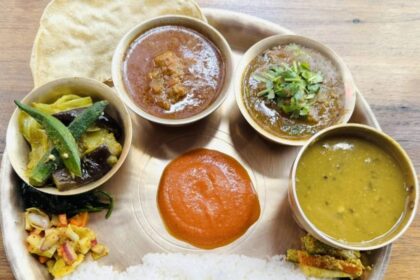Per capita rankings put Vietnam first, Korea close behind
South Korea trails only Vietnam in the world rankings for instant noodle eating per person. New industry data for 2024 shows the average Korean ate 79.2 packs over the year, placing the country second globally in per capita terms. Vietnam led the list at 81 servings per person. The next tier includes Thailand at 57, Nepal at 54, Indonesia at 52, Japan and Malaysia at 47 each, Taiwan at 40, the Philippines at 39, and China including Hong Kong at 31. These figures underline how common noodles are in daily life across much of Asia.
Per capita numbers measure appetite relative to population, and they tell a different story than total sales. Korea’s total consumption reached about 4.1 billion packs in 2024, which ranks eighth by volume. Vietnam, despite a much smaller population than China or India, ranked fourth by total volume with about 8.14 billion packs. China, including Hong Kong, remained the world’s largest market by far with about 43.8 billion servings in 2024. Global demand reached roughly 123.07 billion servings last year, setting a new high, according to the World Instant Noodles Association.
The changing per person leaderboard reflects a shift over the past few years. Korea often led this ranking until 2020, then Vietnam surged ahead in 2021 and has remained in front since. Korea’s total demand has kept rising, from 3.79 billion units in 2021 to 4.04 billion in 2023 and about 4.1 billion in 2024. Many European countries remain far lower in per capita terms, often below 10 servings a year, although interest is growing as Asian food finds a wider audience.
How per capita compares with total demand
Per person figures highlight intensity of consumption, while total volume reflects market size. A country with a huge population can lead global totals even if the average person eats far fewer packs. China illustrates this dynamic. The average there is around 31 servings per person, yet the country still accounts for the largest slice of global demand, with 43.8 billion servings in 2024. Korea is the opposite case. With a population near 52 million and a very high per person rate, the market still totals a sizable 4.1 billion packs but remains smaller than giants like Indonesia and India.
Looking at 2024 by total volume, China including Hong Kong led with about 43.8 billion servings, followed by Indonesia with about 14.68 billion and India with about 8.32 billion. Vietnam placed fourth at about 8.14 billion, then Japan with about 5.9 billion. The United States is the top non Asian market at just over 5 billion servings a year. The Philippines sits near 4.5 billion. Korea is around 4.1 billion. Thailand is just under 4 billion, and Nigeria rounds out the top 10 at about 3 billion. These rankings show how Asia dominates both by scale and by frequency of consumption.
Why instant noodles dominate in Asia
Instant noodles hit the sweet spot of convenience, comfort, and price. They store well, cook fast, and deliver familiar flavors. For students, shift workers, and busy urban families, the value proposition is straightforward. The product also fits within existing food cultures where noodles and soups have deep roots, which makes adoption easy and repeat consumption common.
Price matters. In Vietnam, a pack typically costs around 3,000 to 5,000 VND, while a bowl of the cheapest vermicelli is about 15,000 VND and a bowl of pho often exceeds 25,000 VND. A pack that costs a fraction of a fresh bowl helps explain why many people eat instant noodles several times a week. A wide range of flavors and formats also keeps demand stable. Market leaders offer classic shrimp, chicken, and beef broths, dry stir style noodles, and even rice noodle variants that echo local dishes.
Tastes vary by country. In Indonesia, many products are halal to serve the largely Muslim population. In India, vegetable and tomato based soups perform well for a large vegetarian consumer base. In Vietnam, shrimp flavored broths and pho style rice noodles are popular. In the United States, noodles are often cut shorter because many people eat them with a spoon or fork. Product tailoring helps brands align with local habits and drives repeat buying.
Vietnam’s rise since the pandemic
Vietnam’s per person consumption accelerated during and after the pandemic. Estimates show the average rose from about 55 servings in 2019 to roughly 72 in 2020, then near 87 in 2021. The figure has settled around 81 in 2024, which still leads the world. Total demand has hovered a little above 8 billion servings a year since 2021, placing Vietnam among the global leaders by volume as well.
The local market is competitive and diverse, with more than 50 companies in the category. Leading players include Acecook Vietnam, Masan, and Uniben. Industry reporting puts Acecook’s domestic share above one third, with Masan close behind. Frequent new flavors, rice noodle formats, and broader distribution keep the category fresh. Vietnamese instant noodles are also finding more buyers abroad. The European Union recently removed Vietnamese instant noodles from a food safety control list, which is expected to ease sales into Europe. With overseas Vietnamese communities growing and tourism bouncing back, the export story has room to expand.
Korea appetite and rising exports
Korea’s per person average of 79.2 packs in 2024 reflects a long standing comfort food culture that embraces quick meals and late night snacks. Favorite brands have become global ambassadors. The fiery Buldak range from Samyang Foods has found viral fame, while Nongshim’s Shin Ramyun remains a staple in many countries.
Export momentum is strong. From January to September, Korea’s ramyeon exports rose about 24.7 percent year over year to roughly 1.6 trillion won, or around 1.1 billion dollars. Interest is growing in Europe and North America as K food and Korean pop culture pull consumers toward Korean flavors. Korea’s per person rate is unlikely to surge far beyond today’s level, but the overseas opportunity is expanding as major brands localize spice levels, portion sizes, and packaging for new markets.
Global demand and market size
Worldwide instant noodle consumption has climbed back to new highs. World Instant Noodles Association figures show 116.56 billion servings in 2020, 118.18 billion in 2021, 121.2 billion in 2022, 120.21 billion in 2023, and 123.07 billion in 2024. Asia drives most of that appetite. Industry estimates place the instant noodles market at about 57.73 billion dollars in 2023, with roughly 85 percent of sales in Asia. The United States and Nigeria are the only non Asian countries in the top 10 by volume. Southeast Asia alone accounts for nearly one quarter of global demand when aggregating its largest markets.
Methodology matters. Per person numbers reflect servings per resident in a given calendar year, while country totals are counted in billions of servings. Figures compiled by the World Instant Noodles Association are estimates pulled from national industry data where available. The latest country level table is published by WINA, which tracks changes across more than 60 markets and updates figures periodically.
Health concerns and practical ways to make ramen better
Instant noodles are convenient and tasty, but they are not a complete meal. Most noodles are made from refined wheat flour, which has a high glycemic index and can send blood sugar up quickly. Many products use a fried noodle block, often cooked in palm oil, which adds calories. Seasoning packets can be very salty. Drinking the entire broth can push sodium intake high, which is not ideal for people managing blood pressure. Eating in a hurry can make blood sugar spikes more pronounced because rapidly digested carbohydrates hit the bloodstream fast.
Small changes at the table make a big difference in how your body handles a bowl of noodles. Nutrition advice often focuses on adding fiber, protein, and potassium while cutting excess sodium. These simple steps help slow digestion, moderate glucose spikes, and balance taste without losing the dish you enjoy.
- Add an egg. The protein helps blunt blood sugar spikes and makes the meal more filling.
- Load up on vegetables. Kimchi, spinach, cabbage, mushrooms, or frozen mixed vegetables add fiber and micronutrients.
- Toss in bean sprouts or mung bean sprouts. They add crunch, fiber, and protein, and can reduce the perception of salty broth.
- Use less soup powder. Start with half the packet, then adjust to taste. Consider low sodium versions when available.
- Do not drink all the broth. Leaving some broth behind reduces sodium intake.
- Choose non fried noodles when possible. Some brands offer air dried or baked blocks with less oil.
- Eat at a steady pace. Slower eating helps your body handle carbs more gradually.
- Pair with protein. A side of tofu, boiled chicken, or fish cakes adds staying power.
These tweaks turn a quick bowl into a more balanced meal. They also preserve what makes instant noodles so popular, fast prep and familiar flavors, while dialing back the parts that are less friendly to long term health.
Key Points
- Vietnam led per person instant noodle consumption in 2024 at 81 servings, with Korea second at 79.2.
- Korea consumed about 4.1 billion packs in 2024, eighth by total volume.
- China including Hong Kong remained the largest market by volume at about 43.8 billion servings in 2024.
- Global demand rose to about 123.07 billion servings in 2024, a new record.
- Asia accounts for roughly 85 percent of global instant noodle sales by value.
- Vietnam’s per person average jumped during the pandemic and remains high with a competitive domestic market.
- Korean brands are expanding exports, with reported shipments up about 24.7 percent year over year in the first nine months of 2024.
- Healthier bowls are possible by adding vegetables and protein, using less soup powder, choosing non fried options, and eating at a steady pace.












